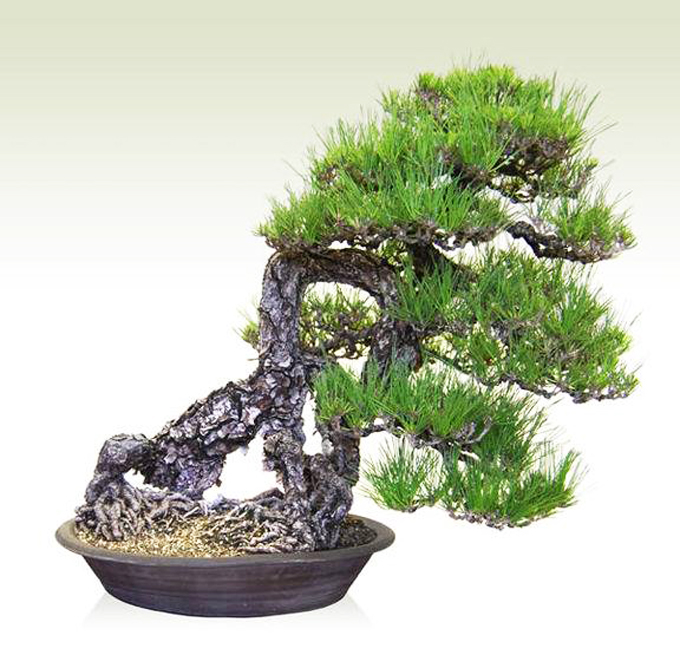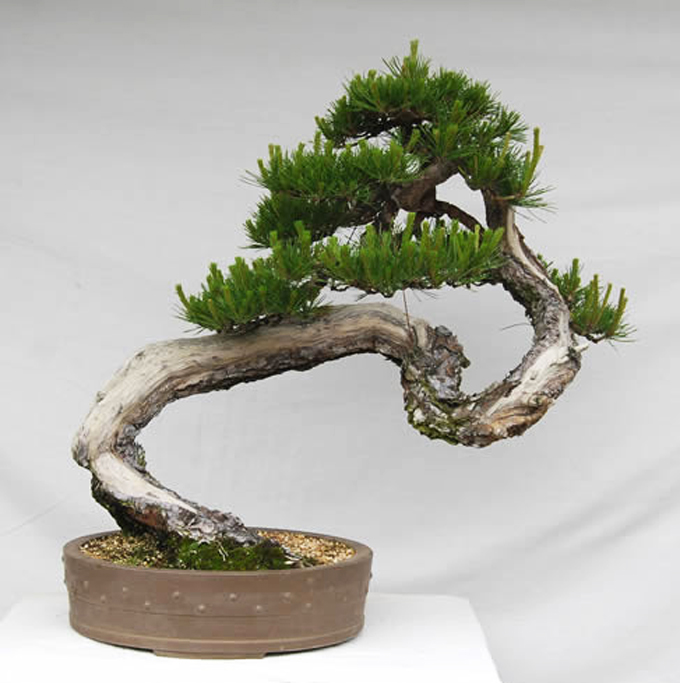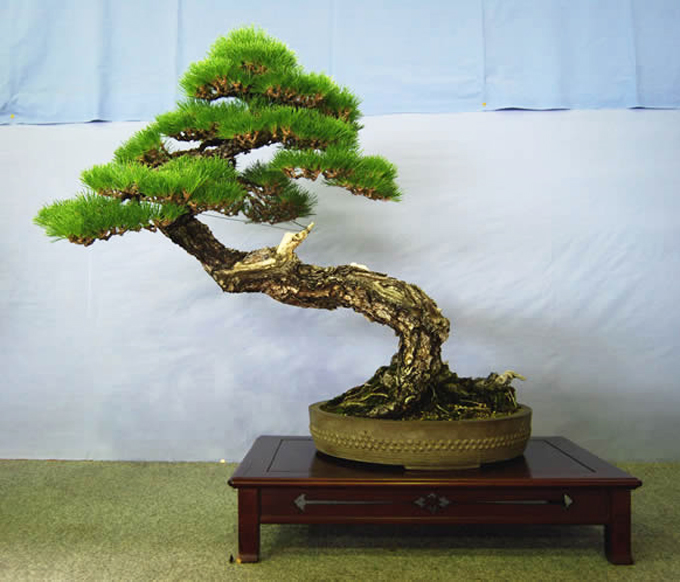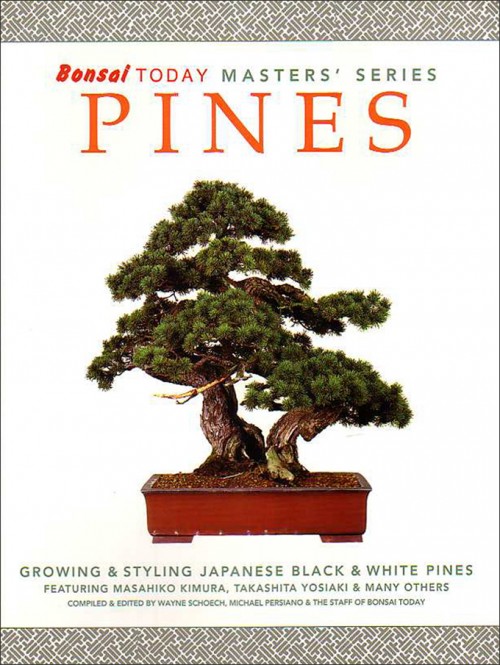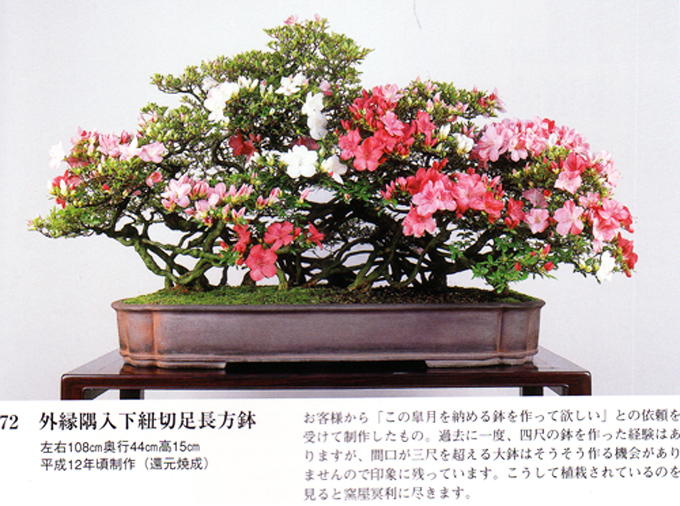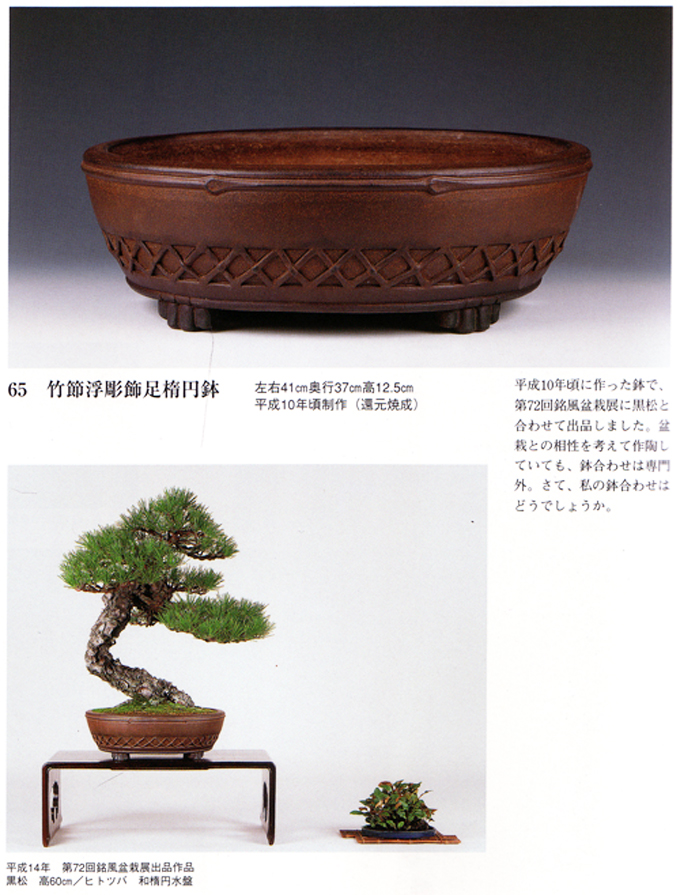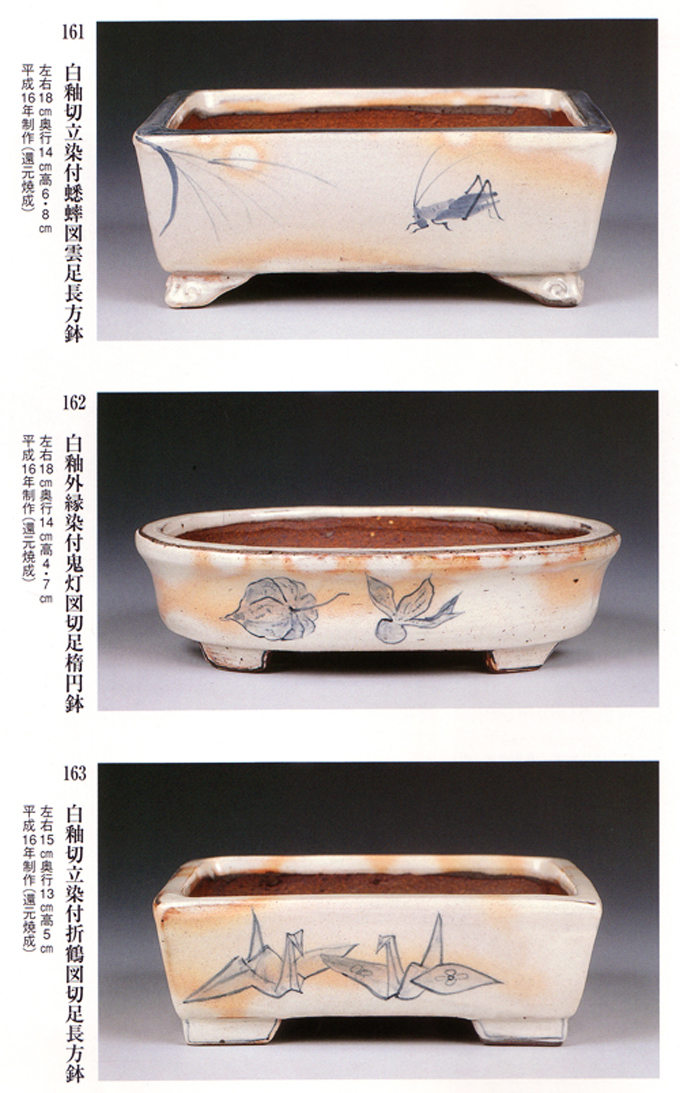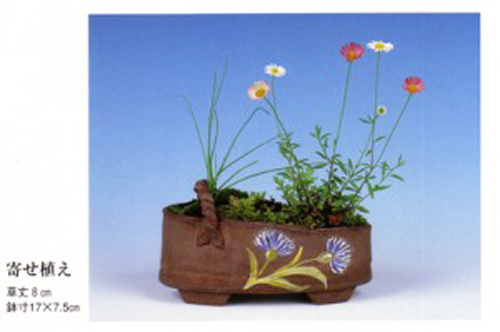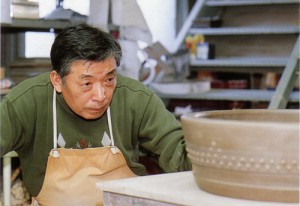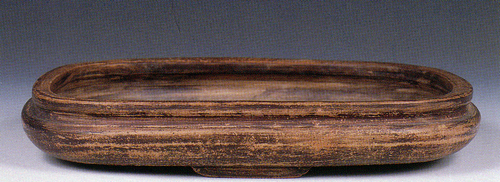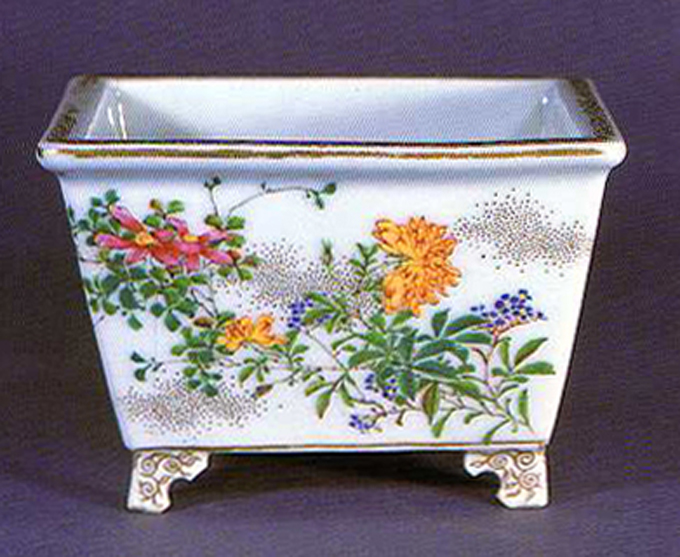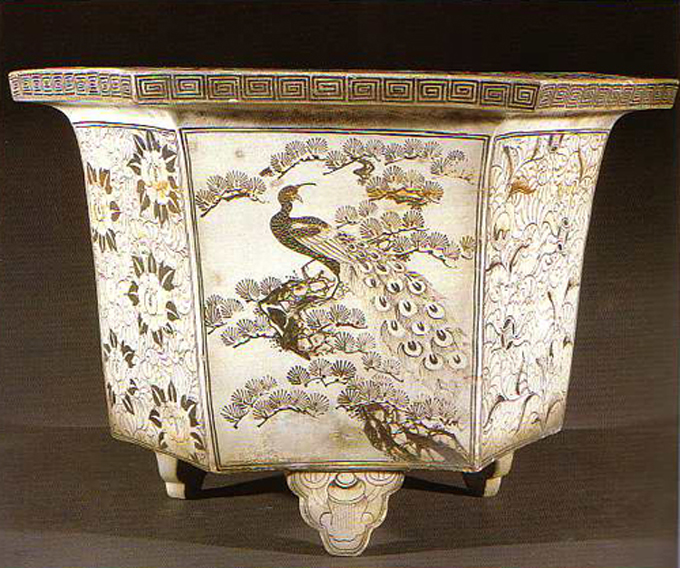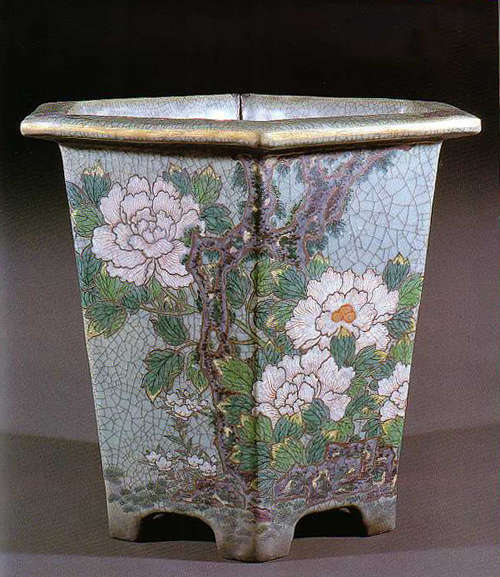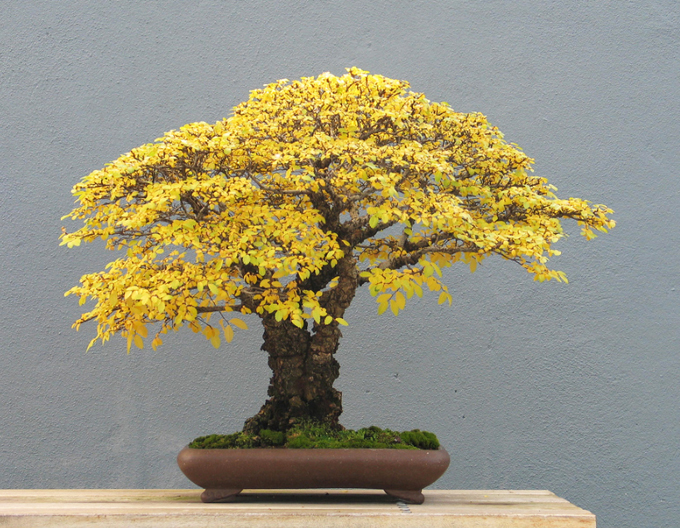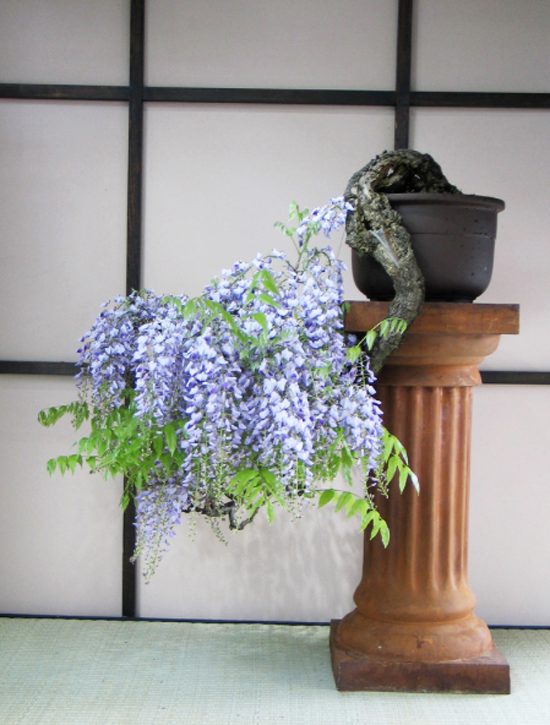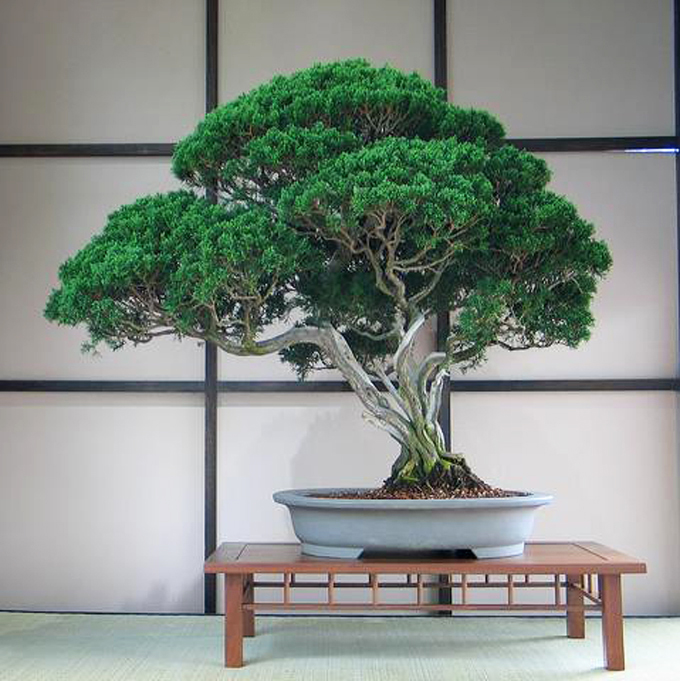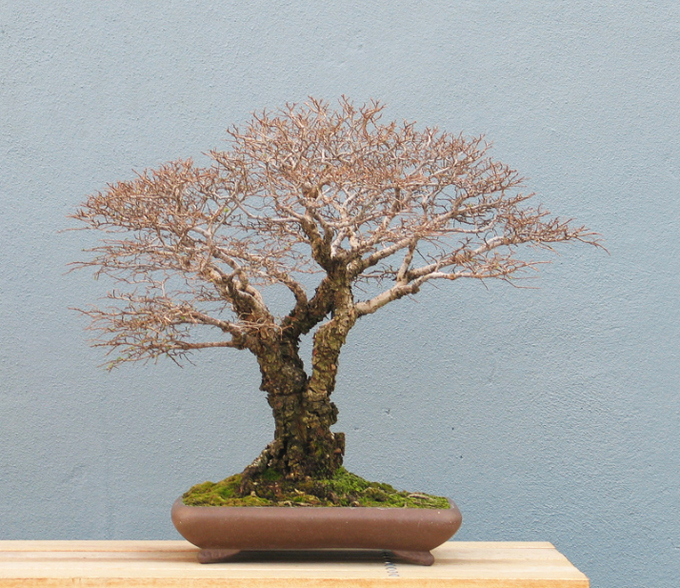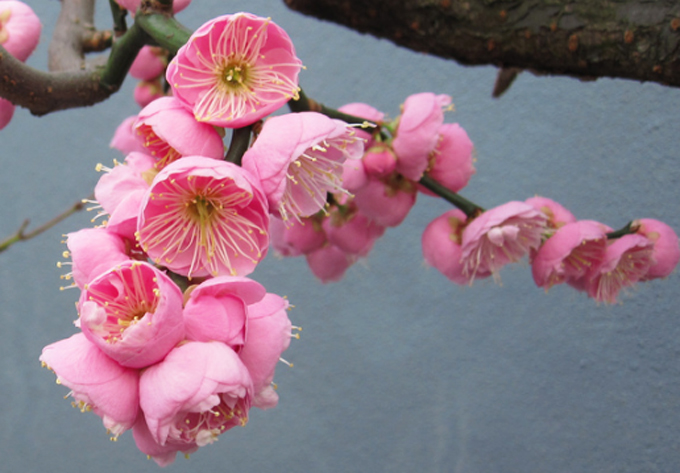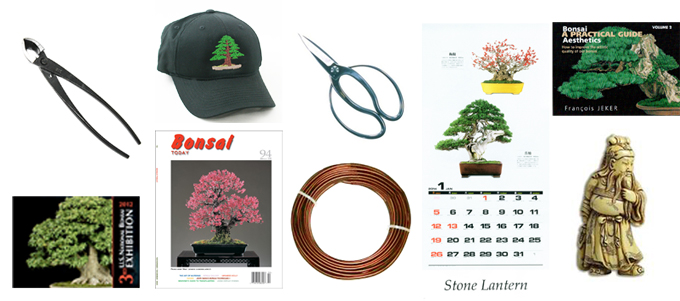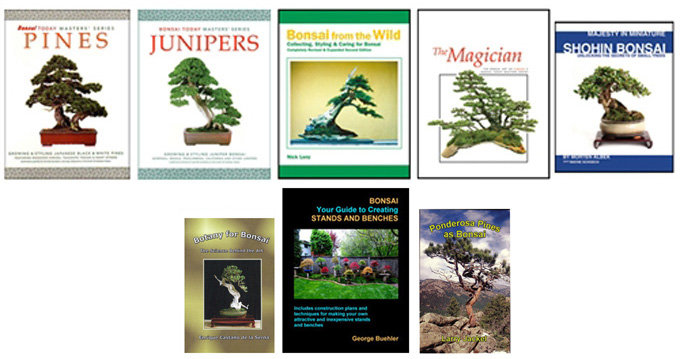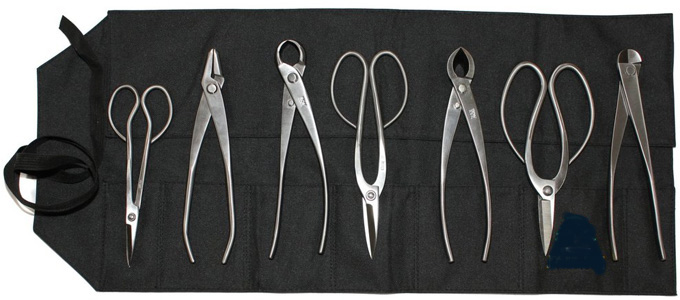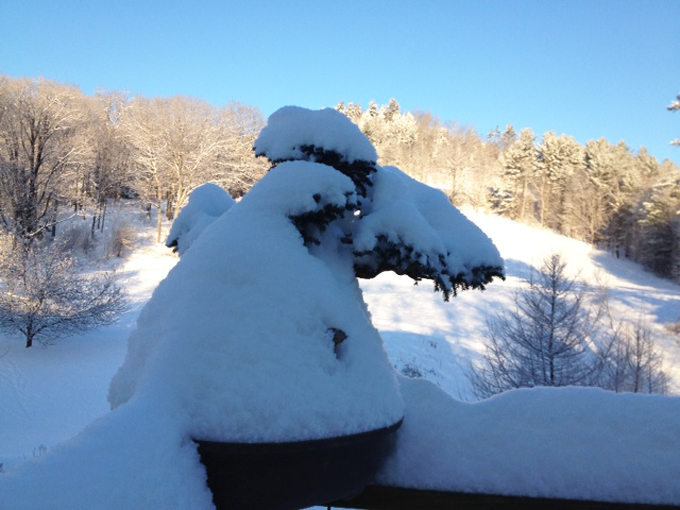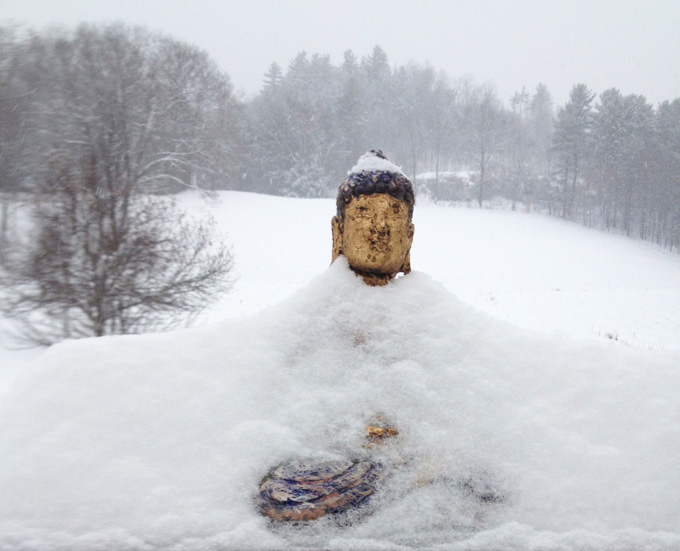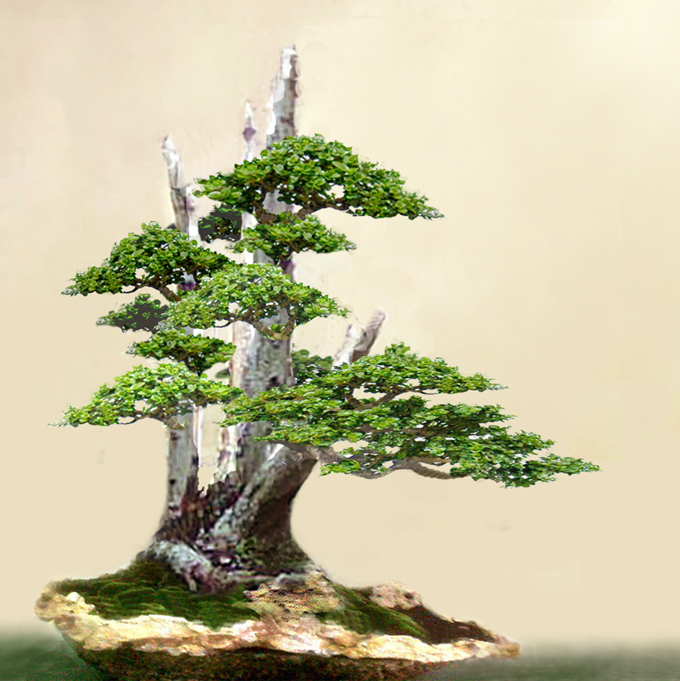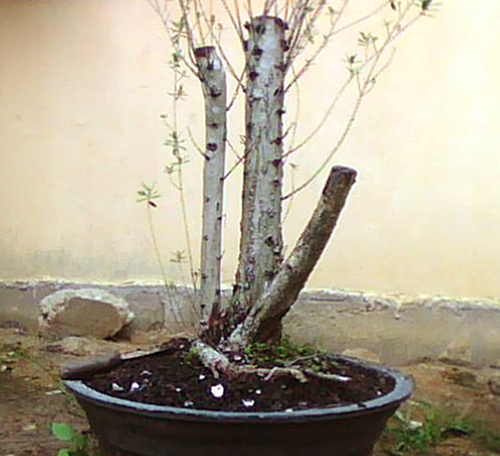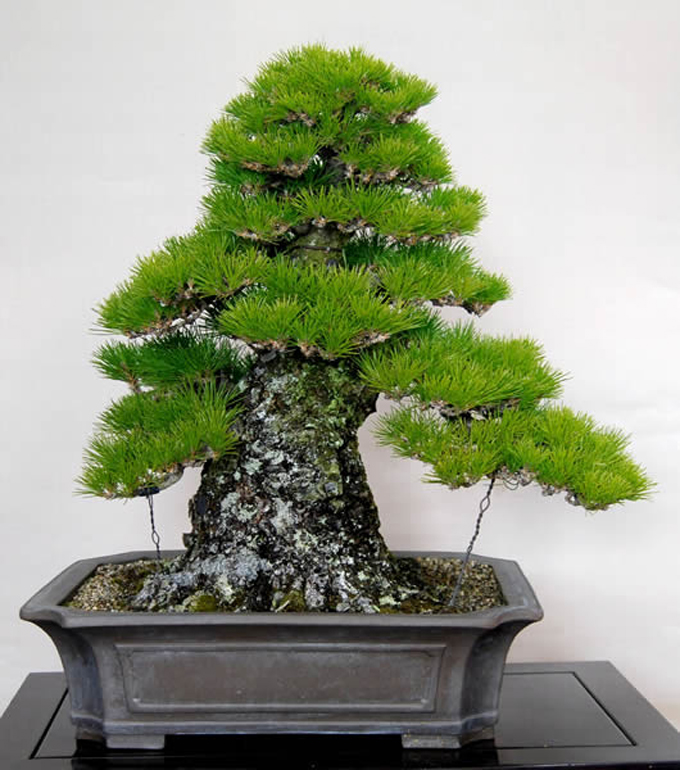 This trunk is so heavy that you could imagine it supporting a huge mass of foliage, yet this humble crown works to perfection. There’s a lot more that could be said about this great old tree, but I’ll stop at pointing out the luminous color and texture of the trunk (not that you could miss it). The tree is around 50-years-old and was grown from seed. It belongs to Kiyoshi Hiramatsu (great name for someone who grows pines) owner of the Hiramatsu Seijuen bonsai garden in Takamatsu’s Kokubunji area in Japan.
This trunk is so heavy that you could imagine it supporting a huge mass of foliage, yet this humble crown works to perfection. There’s a lot more that could be said about this great old tree, but I’ll stop at pointing out the luminous color and texture of the trunk (not that you could miss it). The tree is around 50-years-old and was grown from seed. It belongs to Kiyoshi Hiramatsu (great name for someone who grows pines) owner of the Hiramatsu Seijuen bonsai garden in Takamatsu’s Kokubunji area in Japan.
We just ended 2013 with three great Kuromatsu (Japanese black pines), so let’s start the new year on the same note.
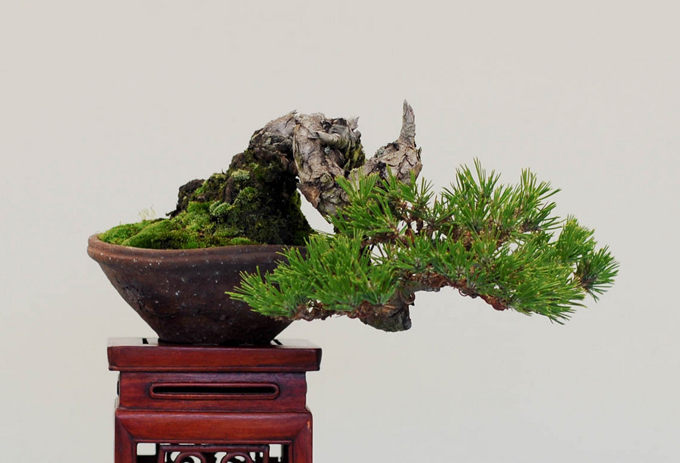 Semi Cascade Shohin Japanese black pine from the Bay Island Bonsai’s 11th annual exhibit in Pleasanton, California. The photo is by Jonah Dupuich, Bonsai Tonight. Normally, cascading bonsai are shot with the cascade to the right or left. No problem though, this angle and the fact that’ the shot is so close-up, allows you to appreciate the bark and the quality of the needle reduction. Not to mention a different take on the tree’s movement and the unique pot.
Semi Cascade Shohin Japanese black pine from the Bay Island Bonsai’s 11th annual exhibit in Pleasanton, California. The photo is by Jonah Dupuich, Bonsai Tonight. Normally, cascading bonsai are shot with the cascade to the right or left. No problem though, this angle and the fact that’ the shot is so close-up, allows you to appreciate the bark and the quality of the needle reduction. Not to mention a different take on the tree’s movement and the unique pot.
 From Worlds Within Worlds 2: Black Pines, an article on Andy Rutledge’s Bonsai Journal. Here’s Andy’s caption: “This pine is a good example of the important traits of a good black pine bonsai; powerful trunk, aged bark, strong rootage, strong and dark green foliage. Notice how compact the growth is.” Photo by Boon Manakitivipart.
From Worlds Within Worlds 2: Black Pines, an article on Andy Rutledge’s Bonsai Journal. Here’s Andy’s caption: “This pine is a good example of the important traits of a good black pine bonsai; powerful trunk, aged bark, strong rootage, strong and dark green foliage. Notice how compact the growth is.” Photo by Boon Manakitivipart.
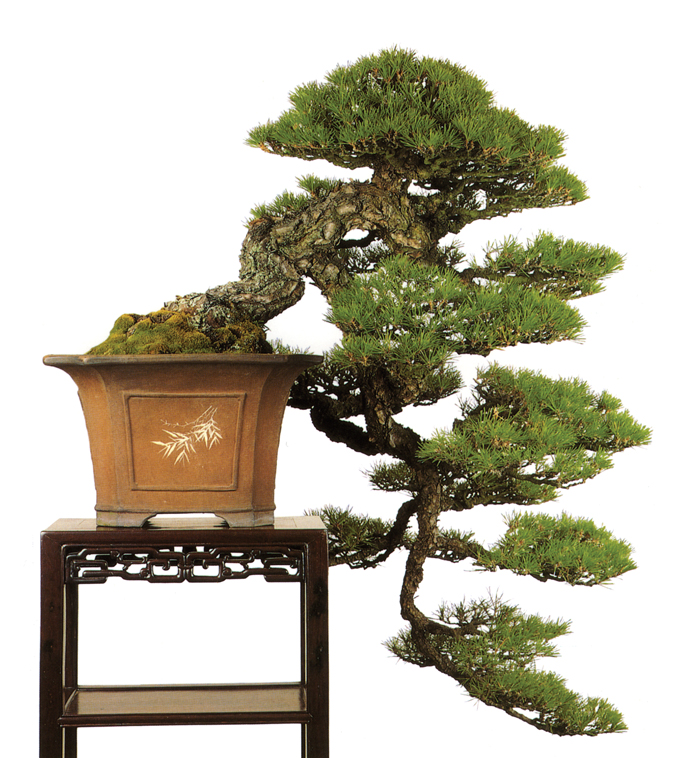 This remarkable and famous cascade Japanese black pine is from the gallery section in our also famous Pine book.
This remarkable and famous cascade Japanese black pine is from the gallery section in our also famous Pine book.
